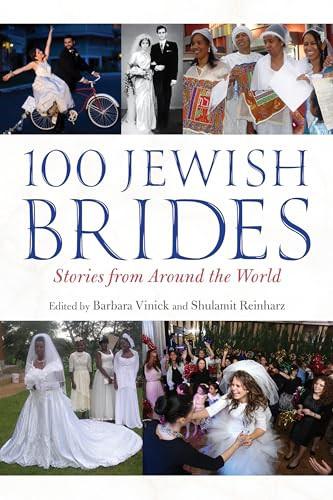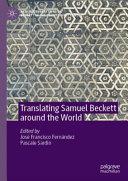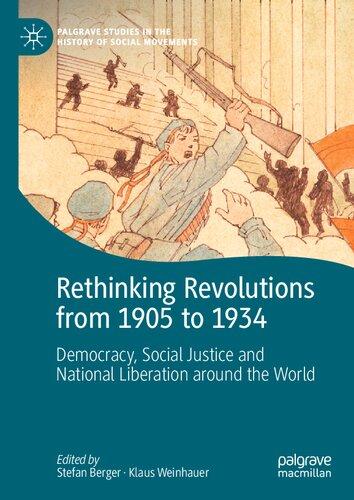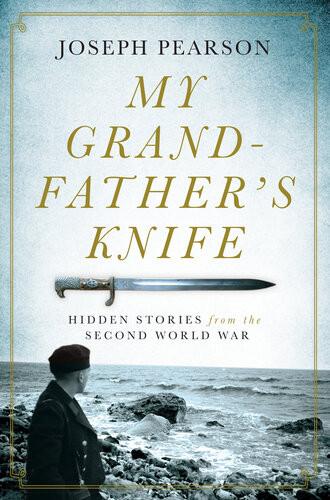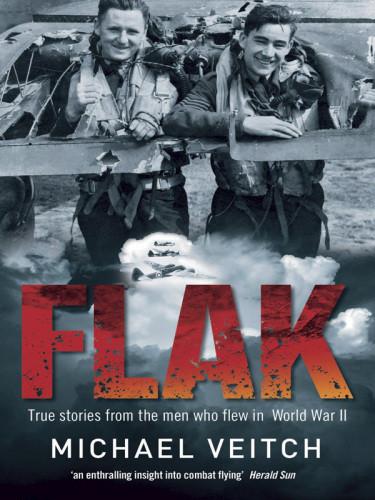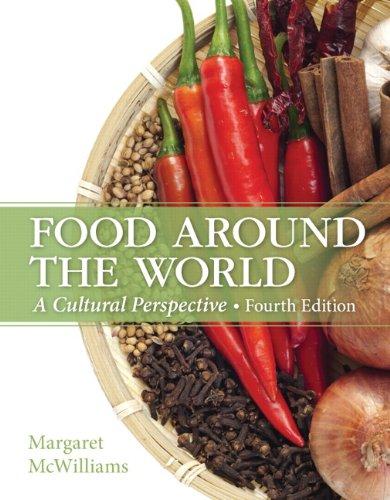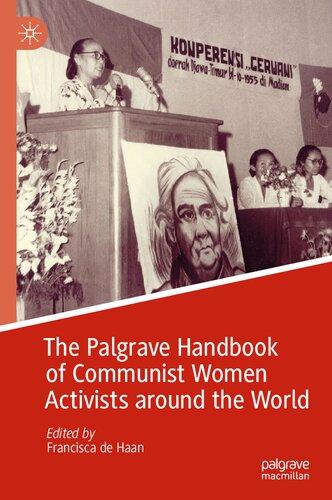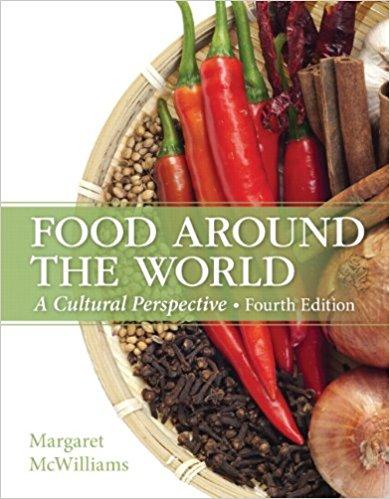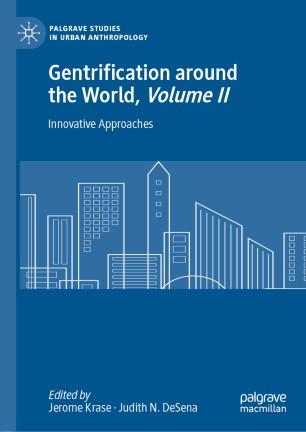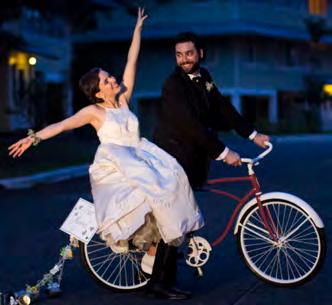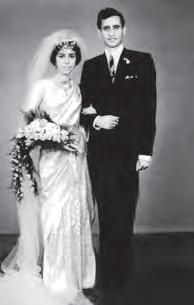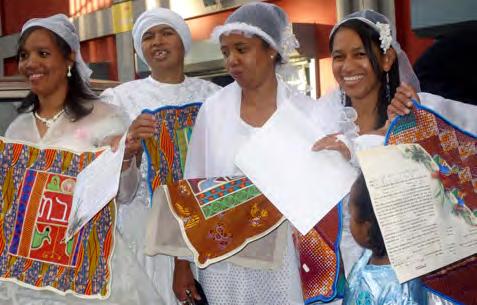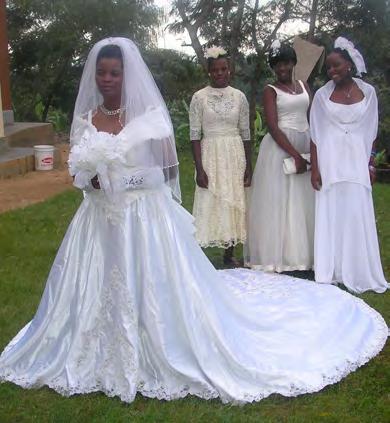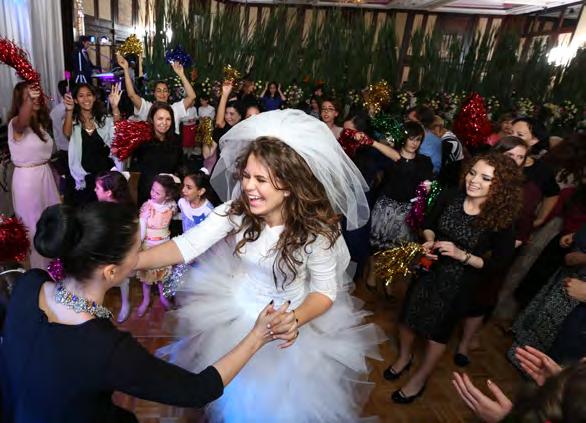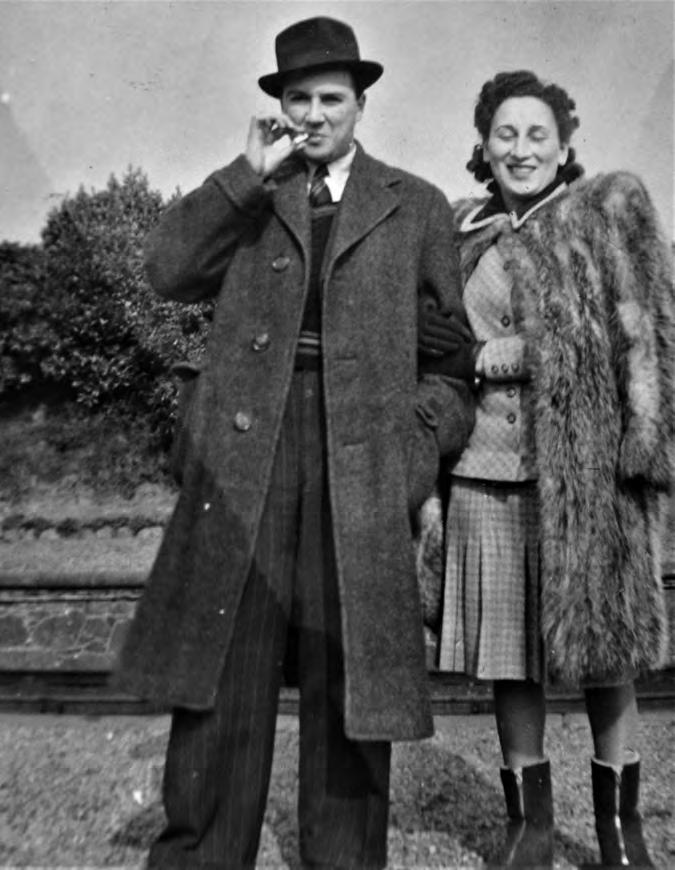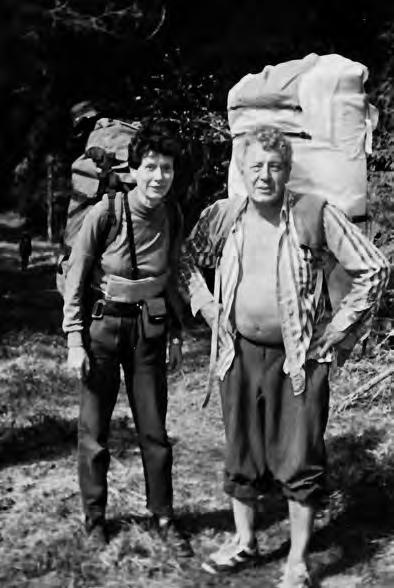100 JEWISH BRIDES
Stories from Around the World
Edited by Barbara Vinick and Shulamit Reinharz
This book is a publication of Indiana University Press Office of Scholarly Publishing Herman B Wells Library 350 1320 East 10th Street Bloomington, Indiana 47405 USA
iupress.org
© 2024 by Barbara Vinick and Shulamit Reinharz
All rights reserved
No part of this book may be reproduced or utilized in any form or by any means, electronic or mechanical, including photocopying and recording, or by any information storage and retrieval system, without permission in writing from the publisher. The paper used in this publication meets the minimum requirements of the American National Standard for Information Sciences—Permanence of Paper for Printed Library Materials, ANSI Z39.48–1992.
Manufactured in the United States of America
First Printing 2024
Cataloging information is available from the Library of Congress.
ISBN 978-0-253-06836-1 (hardback)
ISBN 978-0-253-06838-5 (ebook)
Cover image: Upper left , Cynthia Castro Cohen-Henriquez and Rabbi David CohenHenriquez, Panama. Upper middle, Noreen Daniel and Rabbi Romiel Daniel, India. Upper right , brides with gifts, Madagascar. Lower left, Rut Wangeci and attendants, Kenya. Lower right , Mushka Kantor Kaltmann, Chabad, Thailand.
With appreciation to Kulanu and Hadassah-Brandeis Institute
CONTENTS
A cknowledgments xi
Introduction 1
1 . Meeting 5
Peta Pellach, Australia
Suzanne Vromen, Belgium
Anne Lapedus Brest, Ireland
Luba Ioffe, Russia
Lina Zatzman, Scotland
Sara Gerson, Syria
Modreck Maeresera, Zimbabwe
2 . Courtship 25
Raisa Baskin, Belarus
Racheline Abécassis Barda, Egypt
Racheline Abécassis Barda, Italy
Miriam Sivan, Poland
Daisy Abboudi, Sudan
Mushka Kantor Kaltmann, Thailand
3 . Betrothal 45
Luiza Kario, Bulgaria
Sally Joseph, Burma
Ronit Behar and Ruthy Benoliel, Chile
Batia Shems, Lebanon
Remy Ilona, Nigeria
Pnina Abir-Am, Romania
Eda Birol, Turkey
Rachel Namudosi Keki, Uganda
4 . Conversion before Marriage 69
Aline Livni, Algeria
Cecilia Kahn, El Salvador
Libby Nitzan, Israel
Yehudah Kimani, Kenya
Diana Pershtein-Lapkis, Latvia
Ahava Havotramahavalisoa, Madagascar
Veronica Preiss, Nicaragua
Cynthia Castro Cohen-Henriquez, Panama
Navah Harlow, Portugal
Jacob Steinberg, Suriname
Gabriela Fraenkel, Uruguay
5 . The Invitation 94
Ethel Schuster, Colombia
Carole Bourne, Costa Rica
Miriam Harel, Germany
6. Before the Wedding: Mikveh and Henna 102
Zanet Battinou, Greece
Sheba Grinhaus, Israel
Gabriela Mekler, Mexico
Rachel Jacobson, Morocco
Zvia Epstein, Pakistan
Alanna E. Cooper, Uzbekistan
Tzipi Avizemer and Dafna Avizemer Rabbo, Yemen
7. The Wedding Venue 120
Irene Münster, Argentina
Regina Espenshade, Austria
Rabbi A. Nathan Abramowitz, Bermuda
Dalia Kaufman Katz, Cuba
Andrea Masters, England
Anaëlle Ebrard, France
Katalin Guttmann-Olti, Hungary
Rabbi Michael Harvey, St. Thomas
Larisa Khayter Katsman, Ukraine
Marian Leah Knapp, United States
8. The Ketubah 145
Patricia Philo Kopstein, New Zealand
Lena Rubenfeld Koralewska, Poland
Geri Garfinkel, United States
9. The Wedding Ceremony 155
Nan Weiner, Canada
Vida Neuwirthová, Czech Republic
Evelyn Zentner de Falck, Ecuador
Adena Winer-Avraham and David Winer, Ethiopia
Elizabeth Joshua, India
Rabbi Barbara Aiello, Italy
Molly Neufeld, Peru
Esther Muhlfelder, Spain
Ariella Tishler, Switzerland
10. A fter the Ceremony and Beyond 181
Daphna Shemesh, Afghanistan
Mônica Guttmann, Brazil
Lina Zatzman, Canada
Nancy A., China
Shanaz, Iran
Ainsley Henriques, Jamaica
Ana Lebl, Serbia
Judith Goldstein, Venezuela
1 1. A rranged and Forced Marriages 198
Noreen Daniel and Romiel Daniel, India
Rachel Wahba, India
Farideh Goldin, Iran
Yitzhak Bakal, Iraq
Gina Bublil Waldman, Libya
Herb Selesnick, Lithuania
Yolande Cohen, Morocco
Aimée Aviva Cohen, Tunisia
1 2. I ntermarriage and Interethnic Jewish Marriage 221
Ana Lebl, Croatia
Josette Capriles Goldish, Curaçao
Guershon Nduwa, France
Deedie Karake, Guatemala
Rosario Losk, Honduras
Tracy Slater, Japan
Maxine Hart, South Africa
Annie and Sara Goldsand, United States
13. Wartime and Postwar Weddings 2 42
Rabbi Bent Lexner, Denmark
Rosalind Dobson, England
Karmela Bélinki, Finland
Merav Levkowitz, Israel
Irene Levin, Norway
Hédi Fried, Sweden
Livia Fränkel, Sweden
Shulamit Reinharz, The Netherlands
1 4. M arriage Issues in Israel 2 62
Ruth Carmi, Cyprus
Yael Yechieli, Israel
Notes 269
Index of Brides by Country 273
ACKNOWLEDGMENTS
We are extremely grateful to the authors who generously expended time and effort to share their stories with us, either writing the stories themselves and graciously accepting our edits or making their contributions as patient and forthcoming interviewees online or in person. This is your book!
We are also grateful to the people whom we contacted to ask for referrals to potential authors. The following people provided information that often resulted in a story from a country we wanted to include in the collection, as well a s those who gave us other information. Our sincere thanks for your efforts. We couldn’t have obtained stories from eighty-three countries without you.
Sara Bauminger
Nina Ben-Ami
Joseph Benatov
Karen Bermudez
Rita Blitt
Harriet Bograd
Ayelet Cohen
Paula Dolinsky
Michael Durbin
Roslyn Eschelbacher
Lisa Fishbayn Joffe
Harriett Fox
Beverly Frankel
Titti Frankel
Ali Freedman
Julia Freedson
Kaj Fried
Beverly Friend
Rachel Garrity
Desiree Gil
Rita Gomel
Eliana Gurfinkiel
Rita Hanin
Charlotte Ikels
Shamira Joshua
Ieshia Karasik
Irina Karasik
Ruth Katz
Judi Kloper
Hadassa Kubat
Molly Levine
Roberta Leviton
Janet Levy
Nina Lichtenstein
Devorah Lynn
Erica Lyons
Sharon Oran
David Orenstein
Alvah Parker
Rabbi Peretz Chein
Amy Powell
Rabbi Michael Ragozin
Judy Remis
Shep Remis
Katka Reszke
Tania ReytanMarincheshka
Sarah Rosehill
Amy Rotenberg
Myra Schiff
Annika Schildt
Bea Schutz
Marilyn Segal
Acknowledgments
Noam Sender
Edward Serotta
Riki Shapira
Marjorie Siegel
Richard Siegel
Monica Sisay
Carole Skowronski
Marian Sofaer
Lucy Steinitz
Ana Stella Schwartz
Bonita Sussman
Anne Vinick Garrity
Emily Vinick
Ezra Vogel
Shep Wahnon
Felicia Waldman
Jani Wase Vinick
Debs Weinberg
Ruth Weinstein
Martin Weinstein
Sarah Winer
Anita Zwick
We are grateful to the staff of Hadassah-Brandeis Institute, especially Lisa Fishbayn Joffe, Sylvia Fishman, Nancy Leonard, Debby Olins, and Amy Powell. Barbara thanks the board of Kulanu for opportunities to meet people from the far corners of the globe.
Shula thanks her husband, Jehuda, for traveling with her to many of the countries represented here.
100 JEWISH BRIDES
INTRODUCTION
Several years ago, Brandeis University sociologists and friends Barbara Vinick and Shulamit Reinharz decided to explore the variation of Jewish customs around the globe, drawing on Jewish women’s reports that we would gather. Are Jewish customs fixed and uniform, immune from change? We knew that not all Jews lived according to the rules of Jewish law. How do Jews around the world actually live their lives? How do Jewish customs reflect the cultures in which the participants live? For our first project, we asked if Purim—the springtime holiday celebrating Queen Esther’s courage in saving the Jews, which is described in the Scroll of Esther—was celebrated the same way everywhere. What we found startled us. In some communities, Purim was the most important Jewish holiday of the year and was celebrated extensively, in contrast to other communities where it was a minor occasion.1
We were able to undertake the Purim project because each of us had extensive contacts among Jews in a variety of countries. Barbara is a devoted board member of Kulanu (Hebrew for “all of us”), an organization that supports isolated, emerging, and returning Jewish communities in Africa, Asia, Latin America, and elsewhere around the world.2 In 1997, Shulamit created a new research center at Brandeis University, Hadassah-Brandeis Institute (HBI), whose purpose is to develop new ideas about Jews and gender worldwide.3 In doing so, she had a large network of Jewish scholars, rabbis, and activists from around the globe. When we finished gathering our stories, they were assembled in a softcover illustrated volume, replete with photographs, in an internal publication supported by National Hadassah and HBI. Copies of Esther’s Legacy: C elebrating Purim around the World quickly ran out after it was used as a learning tool in many Jewish groups.
Intrigued by what we learned, we embarked on our next project. This time our focus was on bat mitzvah, the Jewish girl’s coming of age at twelve or thirteen, when she assumes adult responsibilities. Our questions were straightforward: Are b’not mitzvah (plural of bat mitzvah) recognized and celebrated throughout the world? When and where was the first such celebration held? Are the customs around bat mitzvah varied or basically uniform? Once again, the material we discovered astonished us. We learned that the first recognition of girls’ coming of age took place in Italy and was then imitated in the United States. We learned that some ceremonies involved a single girl while others involved a whole group. And we learned that there was a wide range of expectations: some girls engaged in extensive learning of Jewish and Hebrew materials beforehand, while others put on a musical-theatrical performance, typically organized by their mothers and involving elaborate costumes and set designs. Our collection of photographs and stories about b’not mitzvah was so large that we turned to Indiana University Press to publish our book, Today I Am a Woman: Stories of Bat Mitzvah around the World (2012). Once again, our work generated interest and was nominated for and won awards, and the two of us—either together or separately—were invited to make presentations throughout the country.
You can probably guess what happened next. We embarked on our third cultural project—Jewish weddings from the bride’s point of view. Do Jewish weddings vary in diverse international communities? Are particular features always present? As was the case in our previous projects, we found enormous variation in every aspect of the Jewish marriage ritual, from a brief ceremony in a home or rabbi’s study to weeklong rituals and elaborate shindigs.
It turns out that the topic of weddings was much more complex than that of Purim or bat mitzvah. The stories in our book on Purim were arranged alphabetically by country; we arranged the material about Jewish girls’ coming of age by the continent of the country where the bat mitzvah ceremony took place. In the case of our stories about weddings, we have arranged our material in two ways: by stages of the wedding process and by special topics. The “stage” structure we developed derived from what the women (or their surrogates, including their mothers and daughters) told us about the process of Jewish marriages. Our book—and many of the stories we collected—starts with how Jewish brides met their partners. Next, we highlight courtship and engagement or betrothal. Stories that concern brides’ conversion to Judaism before marriage come next. Subsequent chapters deal with invitations to the wedding ceremony, how the bride or others selected the venue for the wedding, special activities that occurred before the ceremony, and the ketubah (wedding
contract). The ceremony itself played a large role in most of the stories, but we chose some of the most fascinating examples for that chapter. Our final chapter within the “stages” framework deals with customs that took place shortly after the wedding.
As you will see, these testimonies are not devoted exclusively to one stage of the journey to the bimah and beyond; we could have placed many stories in multiple chapters. Our decisions were based on elements that were unique, interesting, or particularly relevant to that story.
Because our Jewish brides’ stories come from all over the world and from previous eras, we decided to create separate chapters for special topics, particularly circumstances that varied significantly from the norm, such as arranged marriages and Jewish weddings that occurred during or shortly after the Holocaust. We also decided to create a separate chapter for stories of weddings in I srael because Israeli weddings are currently the subject of intense and even acrimonious debate and policymaking. Because Jewish intermarriage is pervasive around the world,4 except for in Israel, and steadily increasing, we have two chapters on the topic that focus on prenuptial conversion and intermarriage, respectively.
It is our hope that readers of this book will enjoy learning about how Jews marry—and used to marry—around the world and may get some ideas about how they want to celebrate their own marriage. Readers may not be aware of the existence of all of these Jewish communities. Simply learning about them is eye opening. Focusing on marriage shows us that Jewish life is always in flux over time and space. Weddings now reflect the tastes and interests of the couple as much as they do Jewish law and customs.
Barbara solicited stories from women around the globe who came from diverse Jewish communities, some well known and others unfamiliar to mainstream Jews, and gave them few instructions: include the place and date of the wedding, attach a photograph, and limit the story to about one thousand words. (She interviewed in person or remotely a few women who declined to write their stories but wanted to have them included.) When we received the stories, she edited them as lightly as possible and sent them back to the authors for approval. Then the two of us sat down to analyze and organize what had been sent to us.
As it turned out, women did not limit their stories to the wedding ceremonies but rather placed their marriages within the context of a larger narrative of their lives. Most included how they met their partner and how their lives have evolved since they married. We also discovered that many women wanted to write the stories that had come down to them of their mother’s or grandmother’s
wedding—some in amazing detail. When they did not find their own wedding particularly interesting, they wrote about someone else’s—as long as a Jew was involved—such as a cousin’s or a congregant’s. People wanted to write a story that had an interesting twist. Some wrote about why they rejected old customs with which they no longer identified, and others wrote about why they chose to perpetuate these customs, some of which had been adopted through the ages from their non-Jewish neighbors. All in all, the stories are reflections of the way people understand Jewish weddings, with their joys, strains, and variations. This is not a complete compendium of wedding customs—that would probably require an encyclopedia. Rather it is a glimpse into the stories that brides tell about one hundred Jewish weddings from eighty-three countries in many historical eras. In summary, this collection represents a larger project of learning about how Jewish life was and is actually lived around the world by hearing about women’s activities and listening to their voices.
MEETING
The meeting of the bride and groom is always the first step in an eventual marriage, whether the couple were childhood playmates or had first laid eyes on each other the week before. Meeting the spouse is a universally vivid memory for those involved and often a milestone event in family lore.
“Meeting stories” are as old as the Bible. Although we do not know how Sarah met Abraham, we do know how their son Isaac met his wife, Rebecca, a story told in detail in Genesis 24. Abraham’s emissary, Eliezer, found the virtuous Rebecca at a well. Similarly, a generation later, Isaac’s son Jacob saw his f uture wife, Rachel, at a well. Rachel’s father, Laban, then tricked Jacob into marrying his older daughter, Leah.
In these ancient stories, the father had a major role in the couples’ meeting and deciding whether they could marry. To this day, among some groups of ultra-Orthodox Jews, the parents (or just the father) still have this role not so much by Jewish law but by custom. Shtisel , an Israeli television series now popular in the United States, shows the prerogative assumed by a father, with the help of a shadchan (matchmaker), to find an appropriate wife for his son in a contemporary ultra-Orthodox Jerusalem community.
This type of “arranged” marriage was commonplace in Mizrahi (Middle Eastern) Jewish communities in generations past. Chapter 11, “Arranged and Forced Marriages,” tells some of these stories. For the most part, however, Jewish women have been free to choose on their own. This does not mean that parental and community influences have been lacking. Many Jewish women remember mothers and other interested relatives and friends urging them to meet a Jewish man, even going so far as to fix up a couple on a blind date. This
chapter’s story from Zimbabwe illustrates what the writer calls an “assisted” introduction, as does the story from Scotland.
Similarly, Jewish institutions—synagogues and community centers—encourage endogamy (marriage within one’s own group) by supporting youth g roups, social clubs, and singles groups. Hillel chapters, social action groups, and other organizations where Jews gather provide fertile ground at institutions of higher learning. Several of the brides in this chapter—from Australia, I reland, and Russia—met their spouses at these venues.
Meetings that lead to Jewish inmarriage (a marriage between two Jews) may be accidental or intentional. The most intentional meetings nowadays are those aided by online dating sites such as JDate. A recent study indicated that in 2017 close to 40 percent of couples in the United States met online,1 a method that has surpassed introduction by a friend or relative. An intentional relic of the past was the mail-order bride, a stranger brought from afar by a single man with the intention to marry. The unusual story from Syria documents such a situation. While several stories in this collection describe “love at first sight” on the pa rt of people initially attracted to their mates, this one begins with revulsion.
“Accidental” meetings are not uncommon, however. The story from Belgium memorializes an unplanned meeting during a voyage on board a ship. But the workplace has been and continues to be the most significant site for couples to meet accidentally. The entrance of large numbers of women into the labor force since the 1960s has provided financial independence for women, accompanied by later marriage and greater choice of marital partners, including partners who are not Jewish. Chapter 12, “Intermarriage and Interethnic Jewish Marriage,” and accounts in other chapters record the stories of brides who met their husbands through work.
Australia
Peta Pellach
Peta’s story illustrates how meetings, weddings, and the circumstances that surround them change from generation to generation. Nowadays, the marriage of a twenty-year-old Jewish bride and a twenty-one-year-old groom would be more unusual than it was when Peta’s parents married in a traditional synagogue ceremony in the early 1950s. Her own wedding in her parents’ garden, rushed because both spouses, who met while folk dancing, were students thousands of miles away, was emblematic of the times. Peta’s daughter’s wedding was also a sign of the times, planned and financed by the bride and groom themselves. Of course, not every
family includes grandparents who divorced after forty-seven years and a divorced mother in her eighties, unable to remarry (due to a rabbinical stricture) and living with her partner.
In 1950s Melbourne, if a Jewish girl wanted to meet and marry a Jewish boy, she would go to a synagogue dance. Mizrachi Shul in Melbourne was—and still is—Orthodox as were all except one of Melbourne’s synagogues in those days. Perhaps surprisingly, holding dances for young adults, where boys met girls to dance to the latest music, was considered acceptable and even advisable. There, in 1951, my parents met and, after a brief courtship, decided to get married.
My father was not yet twenty-one, and his father thought it was too early for him to marry. So my parents waited until my father was twenty-one when they no longer required parental permission. My mother had just turned twenty. As they walked down the aisle of Melbourne Hebrew Congregation, her father whispered to her, “You don’t have to do this, you know.”
Except for this comment, everything was traditional—a synagogue service on a Sunday afternoon, a white dress, bridesmaids, a wedding reception at a city hotel with lots of speeches and mediocre kosher catering, followed by a honeymoon at a nearby resort for a few days.
The marriage lasted forty-seven years. Then my mother decided that her father had been right. My father had another wedding. My mother, now in her eighties, lives in Israel with her partner. As she is a divorcée and he is a kohen (a descendent of the Jewish priestly class), they cannot marry under Orthodox law. But one wedding was enough for her!
My husband and I also met at a dance—Israeli folk dancing at Columbia University in New York, where I was a graduate student. He drove me home and, miraculously in Manhattan, found parking near my apartment. We had coffee and I taught him to play Scrabble that first night. Our courtship was brief. When Aharon rang my parents to ask for permission to marry me, they had no idea who he was. I explained to them that we were on a summer break and if we were to marry in Australia, everything had to be arranged very quickly.
I had always dreamed of getting married in our garden. By giving them such short notice, I realized my dream. The wedding was held at my parents’ home, which was large enough to accommodate fifty guests inside and many more in the back garden for the ceremony. It took place in perfect late winter weather on a Sunday morning. All of my childhood friends were there. They had some light refreshments, danced in the garden, and then they went home. We continued inside with the wedding breakfast for close family members and a few VIP guests.
I should have admitted earlier that broken marriages are something of a family tradition. My paternal grandparents were divorced in an acrimonious breakup. At the breakfast, they refused to be in the same room. So we had some guests in the large study with Gramps, some guests in the lounge with Nana, and the bridal table for immediate family in the dining room between them. Luckily, the family all behaved, the caterers managed well, and by late afternoon we were done. Two days later, we went back to New York to continue our studies.
Our eldest daughter was born eleven months later. That daughter’s wedding typifies her generation much as ours did and my parents did theirs. Meirav and Yair met at a party in Tel Aviv, knowing immediately that they were right for each other. Older than their parents had been and financially independent, they did not expect us to arrange the wedding for them. We flew in as guests.
Meirav and Yair chose Friday morning for their ceremony, a day and time that has become quite trendy in Israel. The wedding feast had to be vegan— otherwise, the groom would not have eaten! The venue had to be beautiful, so a rooftop in Jaffa was chosen. But some things were traditional. Yair went to the chuppah first, accompanied by his parents. Little girls threw rose petals ahead of Meirav’s entry. Aharon and I walked the last steps to the chuppah with her. There were speeches at the wedding breakfast, something quite unusual in Israel. The couple addressed each other, Yair explaining that he had waited so long to get married because he had not yet met Meirav, and Meirav expressing her love by singing to Yair.
After more musical entertainment by family members and dancing to recorded music, people gradually filtered out to prepare for Shabbat. That night, I hosted our family and Yair’s for a Friday night dinner in our rented apartment in Tel Aviv. On Sunday, we all went hiking. The couple went on a honeymoon a couple of weeks later, after Aharon and I had returned to Australia.
We have since made aliyah to Israel . Another of our children has married in a typical Israeli wedding, held in a wedding hall with over four hundred guests. Whether my two unmarried daughters choose the model of my parents, us, or either of their siblings, it will be fine with us.
Postscript: Aharon and I have no plans to continue the family tradition of divorce.
Suzanne Vromen
Some memories are indelible, including the smallest details. Suzanne’s recollections of meeting her husband and their courtship may be more out-of-the-ordinary than most, but their vividness is not unusual concerning milestone events. Suzanne’s family was among the lucky Belgians who were able to flee when Nazi Germany invaded at the onset of World War II. They escaped to the Belgian Congo where her father had business contacts. She remembers boarding a train with paper money secreted around the handle of the tennis racket she carried. Suzanne is cofounder of the women’s studies program at Bard College and professor emeritus of sociology.
On a sunny late afternoon in 1952, the Artzah, an Israeli ship owned by the Zim shipping company, let out a sharp whistle and slowly edged out of Haifa Bay. I had been working in Jerusalem at the Israeli Ministry of Labor, and now I was heading home to Brussels. I waved to my boyfriend Martin who was seeing me off, turned away from the deck when a gong announced mealtime, and went in search of the dining room. In 1952, food was scarce in Israel. Tzenah this scarcity was called. It meant very little meat and fish, severely rationed, and few fresh vegetables or fruit. Bread and cakes were available but hardly anything else. Once the boat had left territorial waters, real meals could be served. The purser seated me at a large round table next to a good-looking young man with abundant salt-and-pepper hair and wearing an old-fashioned brown suit. We were soon served a delicious meal. A platter of large schnitzels was especially remarkable. I had not seen a schnitzel for ages and had nearly forgotten its taste. We did not talk much as we were too busy enjoying the plentiful food. Everyone was stuffed. “Who would like the extra schnitzel?” asked our waiter, pointing to the lonely piece of meat on the large platter. My neighbor volunteered. “He has a healthy appetite,” I thought to myself.
As we were finishing our meal, my neighbor, who introduced himself as Ben, turned toward me and said, “Would you like to meet Lena Horne? I have a letter of introduction to her.” Lena Horne had just finished a rousing series of performances in Israel and was on our ship, traveling in first class. Of course I wanted to meet Lena Horne! Off we went to meet a most charming and beautiful woman who would dance with the corpulent captain every evening for our shipmates’ entertainment. She wore the most beautiful outfits, pale green or mauve with matching shoes. In her arms, the captain became as light as a feather. When we met her that evening, we chatted for a while about Ben’s
friends who had given him the letter of introduction and whom Lena Horne knew very well. She wanted to know about the Weizmann Institute, where Ben and his friends worked at the time, and she invited us to come and chat with her every day around noon time. Obviously, she liked us and we gladly accepted her invitation.
Ben and I spent much time together, with and without Lena Horne. I learned that he had grown up in the Netherlands and left the country for Palestine less than two months before it was invaded in 1940. He had earned a PhD in inorganic chemistry from the Hebrew University and was on his way to a postdoctoral fellowship at MIT. I soon realized that he was not a narrowly educated scientist. When Ben recited by heart a French poem by Arthur Rimbaud, my favorite poet, I was really smitten. One afternoon, as we were visiting Lena Horne, she said to me, “Won’t you be lonely in Brussels while your husband is at MIT?” I gasped and exclaimed, “My husband? But we just met!” And Ben, in the background, uttered, “Not a bad idea!” We laughed and went on to other matters. When the boat stopped in Naples, we went ashore to visit Pompeii. As we were visiting the ruins, we came to a room where the entrance was blocked by a guard. The guard turned to Ben and asked, “Do you allow your wife to enter?” “Yes,” Ben responded. There must have been something in our demeanor, i n our ease with each other, that triggered people’s perception of us as a couple. So we entered the pornographic room. I don’t remember what we saw; it was probably way beyond what I understood at the time.
When the boat docked in Marseille, we took the train to Paris, where we explored some museums. Then Ben went on to Le Havre to catch his boat to the United States while I went home to Brussels. We promised to write to each other. Did we kiss goodbye? I don’t remember. Ben sent me a photo of himself sprawled on the lawn at Tanglewood, the famed summer home of the Boston Symphony. Meanwhile, I was working part time as a temporary secretary in a few different offices in Brussels. I particularly remember an employer who dealt in armaments with Czechoslovakia and also sold toilet seats around the world. I also took economics courses at the Free University of Brussels, where I had previously received my degree in social sciences.
After a few months, Ben wrote that he would like to see me on his way back to Israel. On the appointed day, the doorbell rang. There he stood, in a dilapidated coat so long that it nearly reached the ground and carrying a guitar. Our cook, who opened the door, took one look at him, went back to the kitchen, and declared to my mother, “This is not for our Suske!” by which she meant me. As I later learned, the coat had been given to him by his Dutch aunt; it had belonged
to his late uncle. It was cold in Holland when he stopped off there, and, as an Israeli, Ben had not bothered to acquire a coat of his own. As for the guitar, no, it was not his; he was bringing it for a friend. Our cook was soon mollified when Ben praised the dishes she had prepared. I had bought tickets to Carmen at the opera house. They were high up in what was called “The Paradise” at the old Theatre de la Monnaie. We were sitting so high and the curtain hung so low over the stage that we mostly saw the legs of the singers. But the music was divine. Later, I took him to one of my favorite nightclubs, but he did not care for the smoking and drinking. Nevertheless, we decided that I would come to see him in Israel.
At the end of the academic year, I took my oral exam in economics with a bushy professor, a White Russian who was a family friend. After marking his satisfaction with my performance, he asked, “And now what are you going to do?” I looked straight at him and replied, “Now I am going to get married!” He jumped up with a big smile, “Congratulations, congratulations!”
I had saved the money from my part-time work, which I used for my ticket to Israel to join Ben in Rehovot, where he had rented an apartment. We wed in December 1953. By coincidence, the waiter who had placed us next to each other on the ship served at our wedding reception. Born of a shipboard romance, our marriage lasted sixty-one years. Ben died in 2015 at age ninety-three.
Ireland
Anne Lapedus Brest
When Anne’s parents married in 1943, the Jewish community of Ireland was reaching its peak of about fifty-five hundred. The majority, like Juliet and Stanley, were children and grandchildren of migrants from Lithuania and Latvia. The area of central Dublin where they married in the now-closed Adelaide Street Shul was known as “Little Jerusalem.” In decline after World War II, the Jewish community is making a comeback with an influx of employees to high-tech companies. Anne, a writer, photographer, and genealogist, presents a detailed account that attests to the central roles that family members play in the lives of young brides and grooms.
My mother, Juliet Maureen Marcus, was born in 1920 in Dublin. Both of her parents were born in Ireland. Like the majority of Irish Jews, her mother’s family was originally from Latvia and her father’s family from Lithuania. Her father, Ellie Marcus, was an optician. One of five children, Julie went to
Anne’s Ma and Da on their honeymoon
St. Catherine’s School for Girls and later to Wesley College High School in Dublin. A member of the Dublin Jewish Girl Guides, she was known as a kind, gentle, and soft-spoken young girl.
The Marcus family lived in the South Circular Road area (the SCR), a Jewish area from the time that Lithuanian and Latvian immigrants arrived in Ireland in the mid-1880s. Julie’s cousins lived there too; they were like sisters all of her life. By the time they were teenagers, her family and her cousins’ families had moved to the more fashionable Terenure area, which became a locus of Jewish life as well.
My father, Stanley Lapedus, was born in 1915 in Dublin to parents from Lithuania. His father came from a family of cigarette makers. One of three brothers, Stanley graduated from Dublin High School and became an optician. He was a talented swimmer, an excellent bridge player, and a good dancer who enjoyed music and had a great sense of humor. Like Julie, Stanley grew up in the SCR. In 1935, his family moved to Rathfarnham, a beautiful district close to Terenure. When a bomb landed in the Lapeduses’ back garden during World War II, Stanley’s father sold the house in five minutes and moved back to the SCR, much to my grandmother’s distress.
Julie and Stanley met at “the hops,” a dance hall in town where young people would go to dance and socialize. Many years later, my mother told me that she had spotted a handsome, simply marvelous dancer on the floor. When he came up to ask her for a dance, she almost froze on the spot. After dating for three months, Julie brought him home to meet her parents. It was quite a coincidence that Stanley was an optician like her father. My grandparents were thrilled on sight; Stanley was charming, dashing, funny, and he helped the younger children with their homework. As was the norm in those days, he asked Julie’s parents for her hand in marriage, and they became engaged in 1942.
On March 16, 1943, Juliet and Stanley married at Adelaide Road Shul, Dublin. Simon Lapedus, the father of the groom, and Ellie Marcus, the father of the bride, walked the handsome chossen (groom in Yiddish) to the chuppah. Stanley was debonair in his black evening suit with a white shirt and bow tie. As he w alked down the aisle with white silk gloves in his left hand and a white carnation in his lapel, there wasn’t a person in the shul who didn’t think he looked like a prince. Then Ellie came back down the aisle to collect his beautiful daughter, the bride. As he walked her proudly down the aisle on his arm, his piercing blue eyes became misty. He was so proud of her on this very special day!
Julie, the young kalleh (bride in Yiddish), was wearing a classical wedding dress in the style of the day with a long veil that flowed softly and gently as she walked toward the chuppah to her chossen and toward her new life. Ellie held
Julie’s arm closely as they walked up the three steps to the chuppah. As Julie and Stanley stood together under the chuppah, their parents, Ellie and Bertha Marcus and Simon and Rosie Lapedus, were kvelling (overflowing with happiness and joy).
Bertha first and then Rosie lifted Julie’s veil so that she could sip the wine. Then Simon and Ellie give Stanley the wine becher (cup) to drink from. Doley Freilich, Julie’s cousin and the chazan (cantor) at Adelaide Road Shul, sang splendidly, as did the choir. Rabbi Alony officiated as Stanley handed Julie the ketubah and, as tradition dictated, placed the wedding ring on her forefinger, later to be transferred to her ring finger. He oversaw benevolently as Stanley solemnly intoned his marriage vows: Ha’ahray at mekudeshet li betaba’at zu, kedat Moshe v’Yisroel (Behold you are consecrated to me by means of this ring, according to the laws of Moses and Israel).
Julie, classical and elegant, and Stanley, tall and handsome, smiled as they stood together, their eyes bright and their lives ahead of them. Finally, Stanley broke the glass, signifying that no matter how happy a simcha, Jewish couples always remember the destruction of both of the temples in biblical days. Mazel tov! Mazel tov!
They went on their honeymoon to the west of Ireland where they spent time on country walks, visiting farms, and meeting the country folk of Ireland. In 1946, their daughter, Anne, was born and in 1949, their son, Robert.
A branch of my father’s family had moved to South Africa in 1922. They made it their life’s mission to encourage my parents to move there as they believed it would be an easier life for us than in Ireland in the 1950s. My mother had gone for a look-see in 1955 and loved it. Both my parents hated the cold weather in Ireland, and South Africa seemed like a paradise.
So in 1961, my father got a job as an optician in Johannesburg, and away we went to the land of sunshine and golden opportunity. Sadly, after just two years in South Africa, my father passed away at age forty-seven. My mother lived until 2016, age ninety-five. She had five grandchildren (my two children and my brother’s three) and five great-grandchildren.
Russia
Luba Ioffe
What was the lure that encouraged people like Luba, ignorant of Jewish observance and the child of parents who denigrated it, to learn and return to Jewish practice and identity? She does not tell us in her story, but hers is one that shows the resilience
Luba and Rudolf on a summer hike ten years after their marriage
of Judaism that has allowed its survival for millennia, sometimes against all odds. Luba did not marry in a Jewish ceremony, but who can doubt that she was a Jewish bride? Of the hundreds of thousands of Jews who remain in Russia after the mass exodus to Israel, Europe, and the United States that began in the 1970s, people like Luba are reclaiming their heritage for themselves and their children, renewing public and private Jewish life where formerly it was prohibited and disparaged.
My parents were one hundred percent Communists. They sincerely believed that ethnic and cultural backgrounds were of no importance for the “brave new world”—the ideal society they were building all of their lives. Religion was out of the question: it was considered a concern of the elderly and uneducated. My knowledge of Judaism was close to zero.
The late 1980s was the time of Perestroika, the restructuring of the Soviet political and economic system. Societies representing different ethnic groups sprang up everywhere in Russia, especially in Moscow, where I lived. Someone
